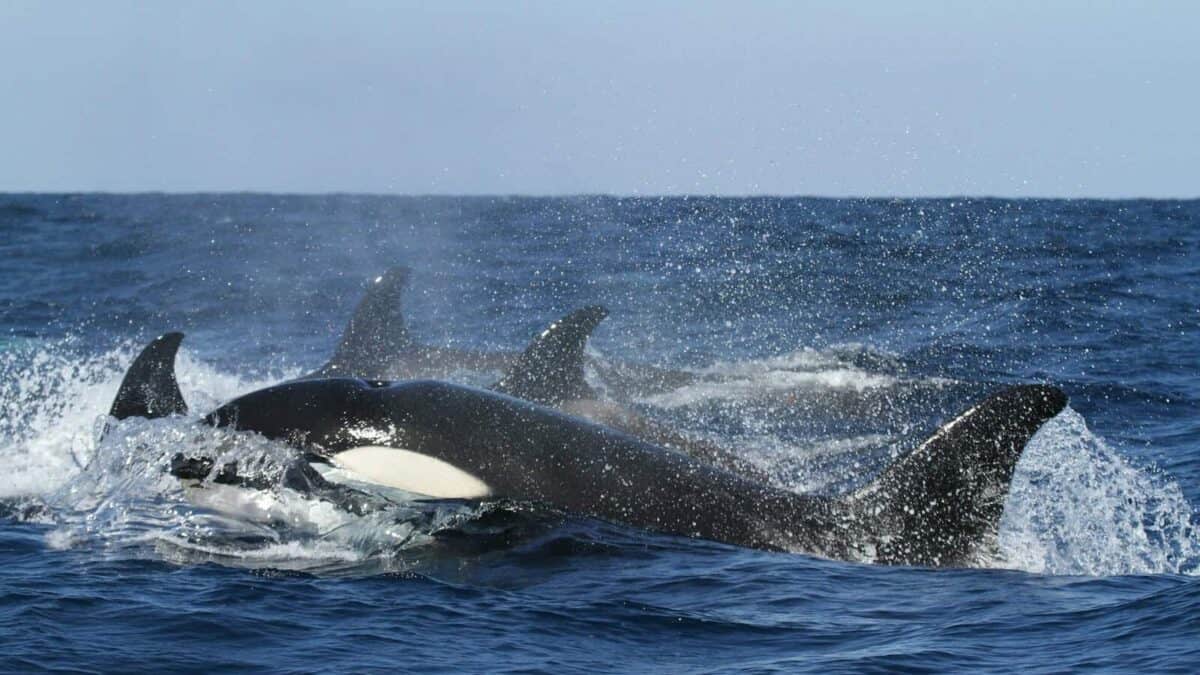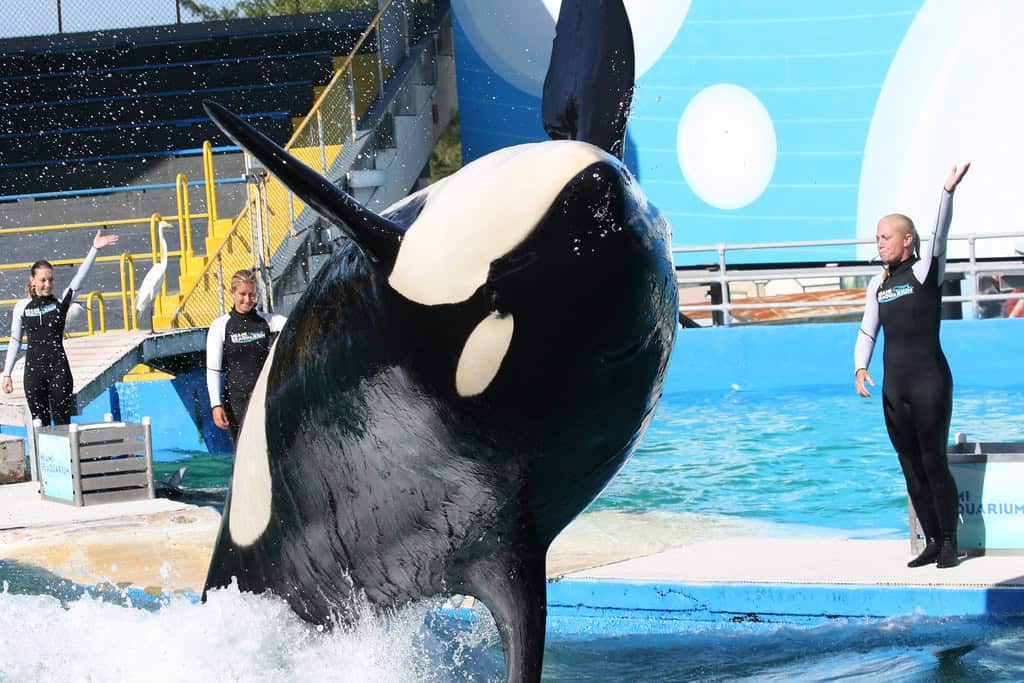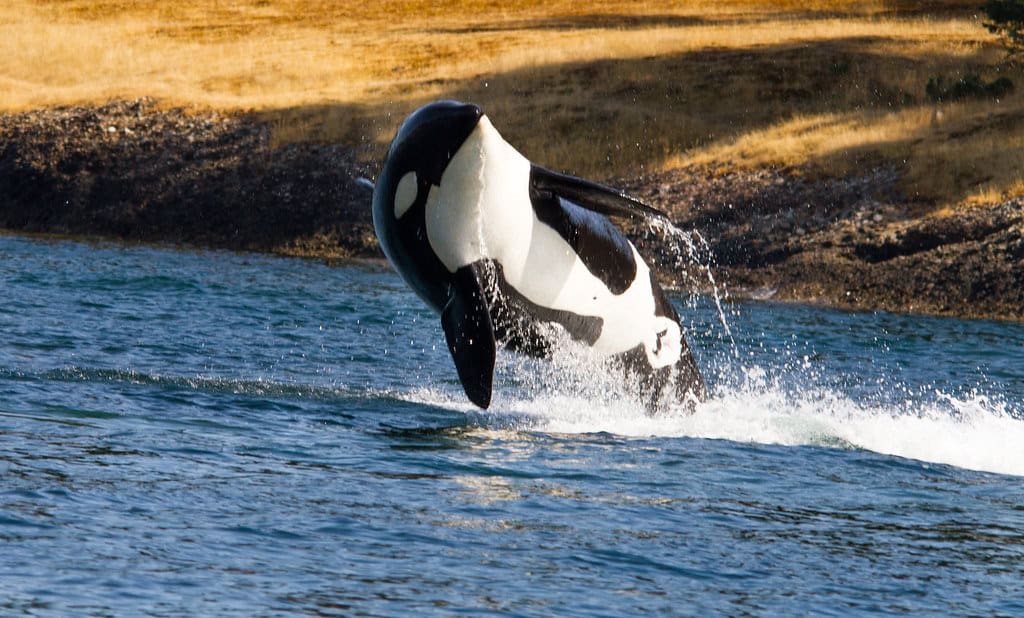When the film “Free Willy” captured hearts worldwide in 1993, few viewers realized they were watching a real orca with his own remarkable story. Behind the cinematic tale of a boy helping a captive killer whale return to the wild was Keiko, an actual orca living in captivity whose life would eventually mirror the movie’s plot in an unprecedented $20 million rehabilitation and release effort. Keiko’s journey from Iceland to captivity in Mexico, then to rehabilitation facilities and eventually back to Icelandic waters represents one of the most ambitious and controversial animal rescue attempts in history. His story raises profound questions about marine mammal captivity, conservation ethics, and the complex relationship between humans and these intelligent ocean predators.
Keiko’s Early Life in Icelandic Waters

Born in 1977 or 1978 off the coast of Iceland, Keiko spent his early years swimming freely with his pod in the North Atlantic. These formative years in the wild would become crucial to his story later in life, as they provided him with experiences and memories of free-living that many captive-born orcas never have. Scientists believe he was approximately two years old when his life took a dramatic turn.
In 1979, the young orca was captured near Iceland as part of the then-common practice of collecting wild killer whales for marine parks and aquariums. At the time, little consideration was given to the ethical implications of removing these highly intelligent, social mammals from their natural environment. Keiko’s capture separated him from his family pod—a traumatic experience considering orcas are known to maintain strong familial bonds throughout their lives, often staying with their birth pods for decades or even their entire lives.
From Iceland to Canada: The Beginning of Captivity

After his capture, Keiko was first transported to Marineland in Ontario, Canada. This marked the beginning of his life in concrete tanks—a stark contrast to the vast ocean environment he had known. At Marineland, Keiko began the process of adapting to captivity and human interaction. He started learning the behaviors and tricks that would eventually make him suitable for public display and performance.
During his three years at Marineland, Keiko grew considerably in size, though he remained much smaller than wild male orcas of comparable age. This stunted growth would become a pattern throughout his captive life, as the limited space and different nutritional profile of his diet failed to support the robust development seen in wild orcas. His time in Canada was relatively brief compared to his later captivity, but it represented the crucial period when a wild orca was transformed into a performing animal.
Deteriorating Conditions in Mexico City

In 1985, Keiko was sold to Reino Aventura (later renamed Six Flags Mexico), an amusement park in Mexico City. The conditions at this facility would prove particularly challenging for the orca’s health and wellbeing. The park’s tank was woefully inadequate—just 20 feet deep and filled with warm, chlorinated water that bore little resemblance to the cold ocean waters orcas naturally inhabit. The shallow depth prevented Keiko from diving properly, an important natural behavior for orcas that can dive hundreds of feet in the wild.
Perhaps most damaging to Keiko’s health was his isolation from other orcas. As highly social animals that naturally live in complex family groups, solitary confinement is particularly detrimental to an orca’s psychological wellbeing. During his years in Mexico, Keiko developed a distinctive skin condition—a form of papillomavirus that manifested as unsightly yellow patches. This condition was likely exacerbated by the poor water quality, inappropriate water temperature, and stress of his living conditions. Despite these challenges, Keiko performed for audiences several times daily, jumping and splashing on command while his health gradually deteriorated.
Becoming “Willy”: Keiko’s Hollywood Moment

In 1992, Warner Bros. was searching for a captive orca to star in their upcoming family film “Free Willy.” They discovered Keiko at Reino Aventura and decided he would be perfect for the role of Willy, a captured killer whale who forms a bond with a young boy who ultimately helps him escape back to the ocean. The irony of casting a captive orca in a film about freeing an orca from captivity wasn’t lost on everyone involved in the production, but few could have predicted how Keiko’s real life would eventually parallel the movie’s plot.
During filming, the production team had to work around Keiko’s health issues and limitations. Close-ups of Keiko revealed his poor skin condition, while many of the more athletic stunts required the use of animatronic models and computer effects, as Keiko wasn’t healthy enough to perform them. Despite these challenges, when “Free Willy” was released in 1993, it became a massive hit, grossing over $153 million worldwide and bringing Keiko into the spotlight. The film’s powerful message about returning captive marine mammals to the wild resonated with audiences—particularly children—and sparked a wave of concern about the real orca who had played Willy.
The Free Willy-Keiko Foundation and Public Campaign

As “Free Willy” captured the imagination of millions of viewers, particularly children, attention began to focus on the real-life whale behind the character. When the public learned about Keiko’s deteriorating health and inadequate living conditions in Mexico, a groundswell of support emerged for helping the actual star of the movie. This led to the creation of the Free Willy-Keiko Foundation in 1995, established by Warner Bros. Studios and Craig McCaw, a telecommunications entrepreneur who became a major financial backer of the rehabilitation effort.
Children around the world became particularly engaged in Keiko’s cause, with many sending letters and donations to help the ailing orca. The foundation launched a campaign that ultimately raised over $20 million for Keiko’s rehabilitation and potential release—making it the most expensive animal rescue attempt in history. The environmental organization Earth Island Institute joined the effort, helping to coordinate the complex logistics of what would become an unprecedented experiment in returning a long-term captive orca to the wild. The campaign represented a remarkable shift in public consciousness about captive marine mammals, with Keiko becoming a powerful symbol for animal welfare advocates.
The Oregon Coast Aquarium: Rehabilitation Begins

In January 1996, Keiko was airlifted from Mexico to the Oregon Coast Aquarium in Newport, Oregon. This marked the beginning of his formal rehabilitation process. The custom-built facility at the Oregon Coast Aquarium represented a dramatic improvement over his previous living conditions, with a 2-million-gallon tank filled with cold, clean seawater. For the first time in many years, Keiko experienced water temperatures similar to his native North Atlantic habitat.
During his two years in Oregon, Keiko’s health improved dramatically. He gained nearly 1,000 pounds, reaching a healthier weight of approximately 10,000 pounds. The papillomavirus that had caused his skin condition cleared up significantly in the better water conditions. Keiko also began a training program designed to prepare him for potential release, which included exercises to increase his strength and stamina. His presence at the aquarium drew record crowds, with visitors eager to see the real “Willy” in person. While the rehabilitation in Oregon was considered successful from a health perspective, it represented only the first step in what would be a long and complex journey toward potential freedom.
Iceland Return: The Sea Pen Transition

In September 1998, Keiko was transported by air to a specially constructed sea pen in Klettsvik Bay in the Westman Islands of Iceland. This move represented a crucial transition from a fully controlled aquarium environment to semi-wild conditions. The sea pen was designed to allow Keiko to experience natural ocean water, currents, and marine life while still receiving care and supervision. For the first time in nearly two decades, Keiko could feel the rhythms of the ocean and experience the sensations of being in his native waters.
The Icelandic sea pen phase of Keiko’s rehabilitation lasted for four years and cost approximately $500,000 a month to maintain. During this time, Keiko worked with trainers who attempted to teach him how to hunt live fish—a skill he would need if he were ever to survive independently in the wild. They gradually reduced his dependence on hand-fed dead fish while introducing him to live prey. Researchers also began taking Keiko on “walks” in the ocean—supervised boat trips outside his pen where he could swim more freely while still maintaining contact with his human caretakers. These excursions were designed to gradually reacquaint him with the open ocean and potentially expose him to wild orcas.
Ocean Excursions and Wild Orca Contact

As Keiko’s rehabilitation progressed, his handlers began taking him on increasingly ambitious ocean excursions. Starting in 2000, these supervised trips took Keiko farther from his sea pen, sometimes for days at a time. The boat would track Keiko’s movements while researchers observed how he interacted with his environment. During these excursions, Keiko began to encounter wild orcas in Icelandic waters, which represented crucial opportunities for potential social reintegration with his own species.
Observations of these interactions yielded mixed results. While Keiko did approach and follow wild orca pods on multiple occasions, researchers noted that the interactions appeared to be relatively superficial. He would swim alongside wild orcas but typically maintained some distance and didn’t fully integrate into their social structure. This raised important questions about whether an orca who had spent most of his life in captivity could ever truly relearn the complex social behaviors necessary to join a wild pod. Despite these uncertainties, the fact that Keiko voluntarily approached wild orcas and they tolerated his presence was considered promising by some members of the rehabilitation team.
The Norwegian Journey and Unexpected Freedom

In the summer of 2002, during one of his supervised ocean excursions, Keiko made an unexpected decision that changed the course of his rehabilitation. While following a pod of wild orcas, he suddenly swam away from his tracking boat and disappeared. For weeks, his whereabouts were unknown, causing considerable concern among his caretakers. Then, in a surprising turn of events, Keiko appeared in Skålvikfjorden, Norway, having swum approximately 870 miles across the open ocean by himself—a journey that demonstrated remarkable navigational abilities and physical stamina.
When Keiko was discovered in Norway, he was actively seeking human contact, approaching small boats and allowing children to pet him. This behavior suggested that despite his physical journey toward freedom, Keiko remained strongly bonded to humans. Norwegian authorities, concerned about public safety and Keiko’s wellbeing, worked with the Free Willy-Keiko Foundation to establish a new care routine. Keiko would stay in the fjord but receive regular feeding and supervision from a small team of caretakers. This arrangement represented a unique compromise—neither full captivity nor complete freedom, but a supervised semi-wild existence that accommodated Keiko’s apparent preference for maintaining human connections.
Life in Norway and Final Days

Keiko spent the last year and a half of his life in Taknes Bay, Norway, under this unique arrangement of supervised semi-freedom. He would regularly approach his caretakers’ boat for food and interaction, but also spent time swimming freely in the fjord. While he occasionally encountered wild orcas in Norwegian waters, he never integrated into a pod. Instead, he seemed to have found a middle ground that suited his particular history—free from the confines of tanks but still connected to the humans who had been his primary social companions for most of his life.
On December 12, 2003, Keiko’s caretakers found him dead in the bay. A necropsy determined that pneumonia was the cause of death. He was approximately 27 years old—younger than the average male orca lifespan in the wild (30-50 years) but older than many male orcas survive in captivity. While his death marked the end of this unprecedented rehabilitation experiment, Keiko’s final years in the open waters of Norway represented a significant improvement in his quality of life compared to his years in concrete tanks. He had experienced the sensations of ocean swimming, encountered members of his own species, and exercised a degree of choice in his movements and activities that would have been impossible in captivity.
Debating Success: The Keiko Project’s Mixed Legacy

The Keiko rehabilitation project has been the subject of intense debate among marine mammal scientists, conservationists, and the public. Critics point to the $20 million cost and argue that Keiko never truly reintegrated into the wild, as he continued to seek human contact until his death. They suggest these resources might have been better spent on conservation efforts for endangered whale populations or improving conditions for other captive marine mammals. Some former trainers and marine park representatives have used Keiko’s case to argue against releasing long-term captive orcas, claiming the project demonstrated the insurmountable challenges such animals face in returning to wild living.
Supporters of the project offer a different perspective, emphasizing the significant improvements in Keiko’s physical and psychological wellbeing after leaving Mexico. They point to his ability to swim freely in ocean water, make choices about his movement and activities, and experience natural stimuli as meaningful improvements in his quality of life. Some argue that expecting complete wild reintegration was perhaps unrealistic for an orca who spent his formative years in captivity, and that the project’s value lies in what was learned about the capabilities and limitations of rehabilitating long-term captive marine mammals. The Keiko project generated valuable scientific data that has informed subsequent marine mammal rehabilitation efforts and contributed to our understanding of orca cognition, behavior, and welfare needs.
Keiko’s Lasting Impact on Captive Orca Policies

Regardless of how one evaluates the success of Keiko’s rehabilitation, his story has had a profound and lasting impact on public attitudes toward orca captivity. The combination of “Free Willy” and the subsequent real-life effort to help Keiko introduced millions of people to concerns about the welfare of captive marine mammals. In the decades since, public opinion has shifted dramatically, with increasing skepticism about the ethics of keeping orcas in captivity for entertainment purposes.
This shift in public sentiment has led to concrete policy changes. In 2016, SeaWorld announced it would end its orca breeding program and phase out theatrical orca shows. Several jurisdictions, including California and Canada, have passed legislation restricting or banning the captivity of cetaceans for entertainment purposes. While these changes can’t be attributed solely to Keiko, his story played a significant role in raising awareness and changing perceptions. The “Blackfish effect”—named after the 2013 documentary that further catalyzed anti-captivity sentiment—built upon the foundation that Keiko’s story had established years earlier. Today, the debate has largely shifted from whether orcas should be in captivity to how to responsibly manage the transition away from this practice while ensuring the welfare of currently captive animals.
The Complex Legacy of Keiko: What We Learned

Keiko’s journey from captive performer to semi-wild orca represents one of the most ambitious and complex animal welfare experiments ever undertaken. His story reveals the profound ethical challenges involved in attempting to “undo” the effects of captivity on highly intelligent, social marine mammals. While the $20 million effort did not result in Keiko fully reintegrating with wild orcas, it demonstrated that significant improvements in quality of life are possible for long-term captive orcas when given access to more natural environments.
Perhaps most importantly, Keiko’s story forces us to confront complex questions about human responsibility toward the animals we take into captivity. His life spanned a period of dramatic change in public attitudes toward marine mammal captivity—from the relatively unquestioned practice of the 1970s to the increasingly controversial industry it has become today. The mixed results of his rehabilitation highlight the irreversible impacts of early captivity on these animals, suggesting that prevention of capture may be more effective than rehabilitation after decades in artificial environments. Yet Keiko’s final years in Norway, swimming freely in the ocean while maintaining human connections on his own terms, offer a compelling middle path that may inform future efforts to improve welfare for captive marine mammals who cannot be fully released.
- This Massive Crocodile Fossil Dwarfs Anything Alive Today - August 15, 2025
- From Symbol to Supper: The Cultural Journey of the Chicken - August 15, 2025
- The Lizard That Brought Fire: Aboriginal Australian Legends - August 15, 2025

